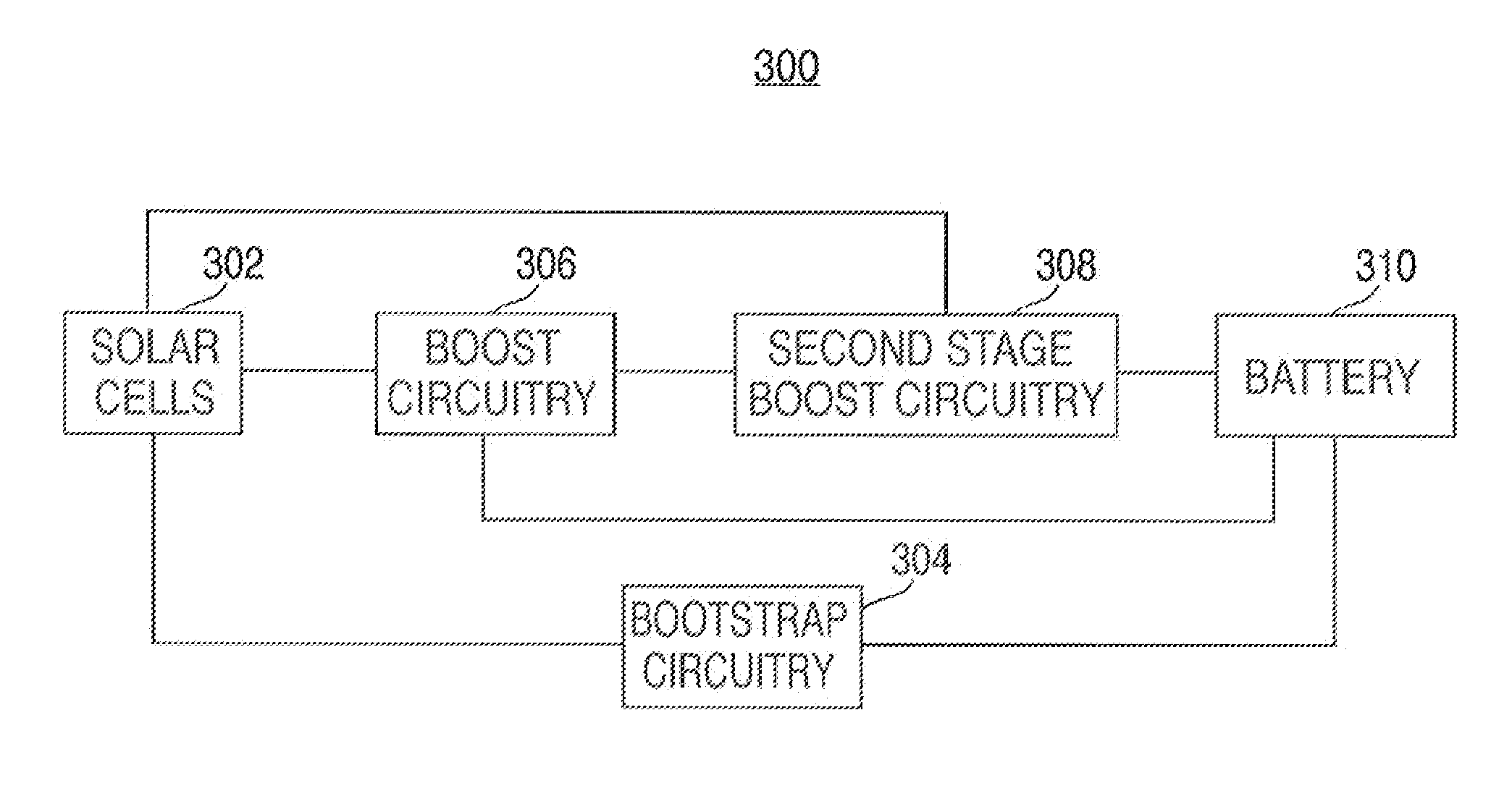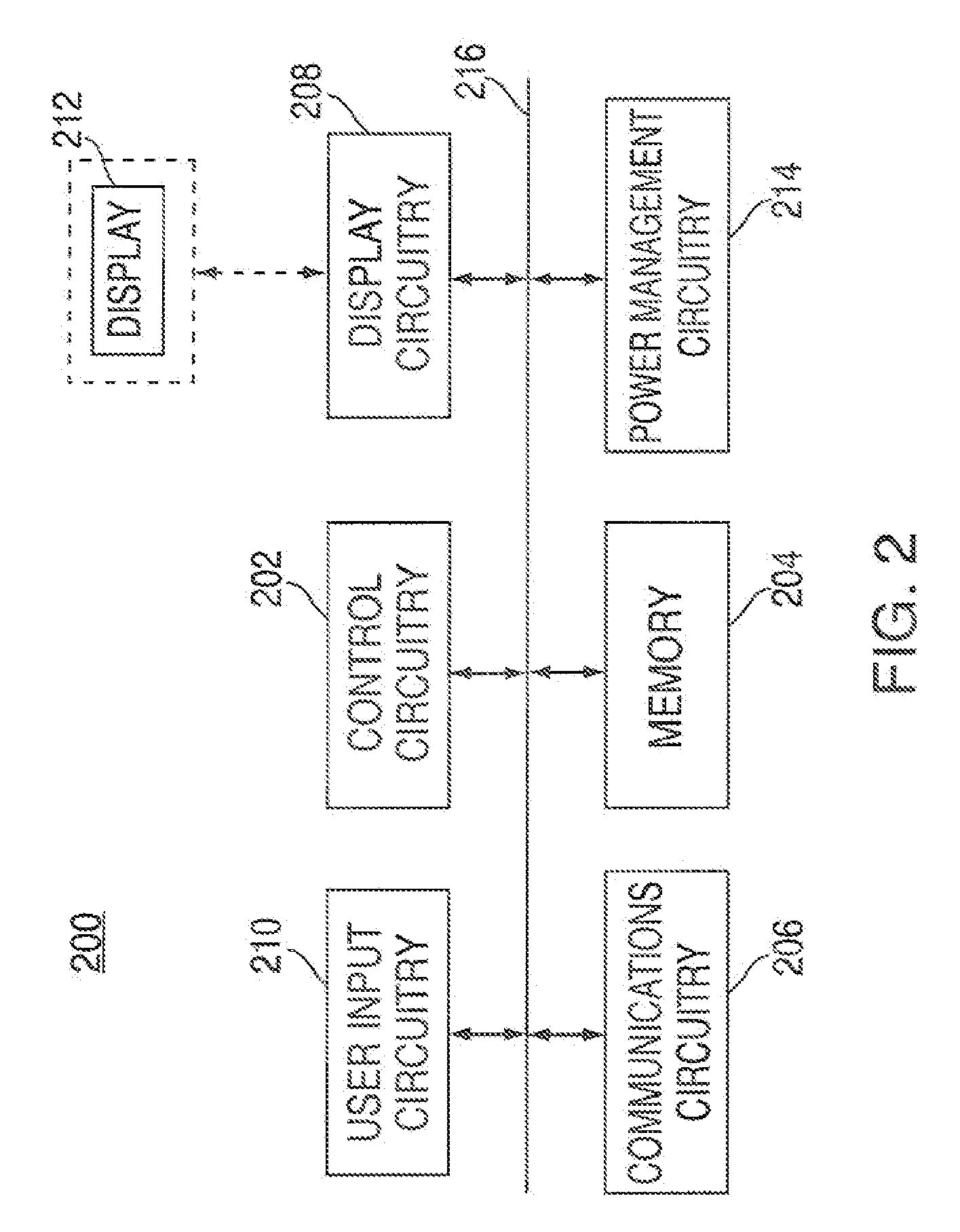Power management circuitry and solar cells
a power management circuit and solar cell technology, applied in the field of power management circuitry and solar cells, can solve the problems of insufficient voltage and/or current generated by solar cells to power portable electronic devices, and achieve the effect of facilitating the generation of sufficient startup voltag
- Summary
- Abstract
- Description
- Claims
- Application Information
AI Technical Summary
Benefits of technology
Problems solved by technology
Method used
Image
Examples
Embodiment Construction
[0023]Conventional portable electronic devices can be powered by standard batteries. Although these batteries can be rechargeable, oftentimes the user may not have time to recharge the batteries or may have problems finding a suitable charging location. Furthermore, the user typically needs to carry around one or more other devices such as a charger, a USB cable, a docking station, and / or another electronic device. Finally, even after the batteries have been recharged, the batteries can only last for a limited amount of time before another recharge is needed.
[0024]Some portable electronic devices (e.g., calculators) use solar cells to power the device. However, because only a small number of solar cells can be placed on the device and because the current output of each solar cells is relatively low, the power generated by these solar cells is limited. This in turn limits the functionality provided by solar powered devices and has led to much research and development in battery techn...
PUM
 Login to View More
Login to View More Abstract
Description
Claims
Application Information
 Login to View More
Login to View More - R&D
- Intellectual Property
- Life Sciences
- Materials
- Tech Scout
- Unparalleled Data Quality
- Higher Quality Content
- 60% Fewer Hallucinations
Browse by: Latest US Patents, China's latest patents, Technical Efficacy Thesaurus, Application Domain, Technology Topic, Popular Technical Reports.
© 2025 PatSnap. All rights reserved.Legal|Privacy policy|Modern Slavery Act Transparency Statement|Sitemap|About US| Contact US: help@patsnap.com



